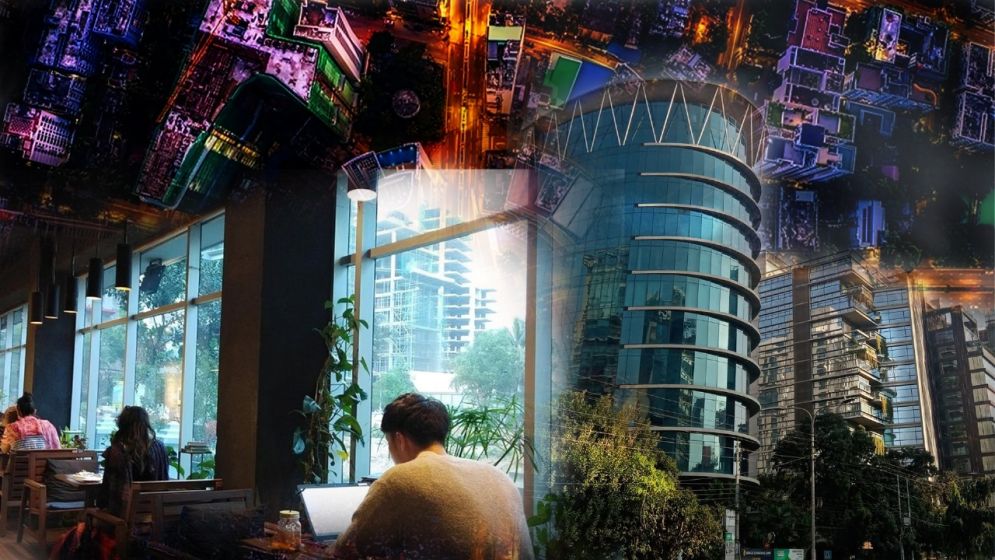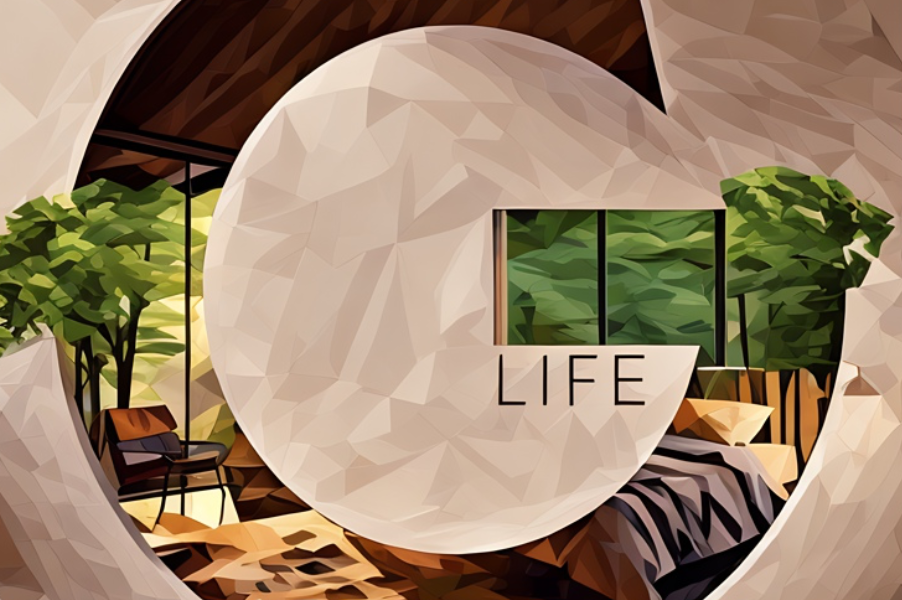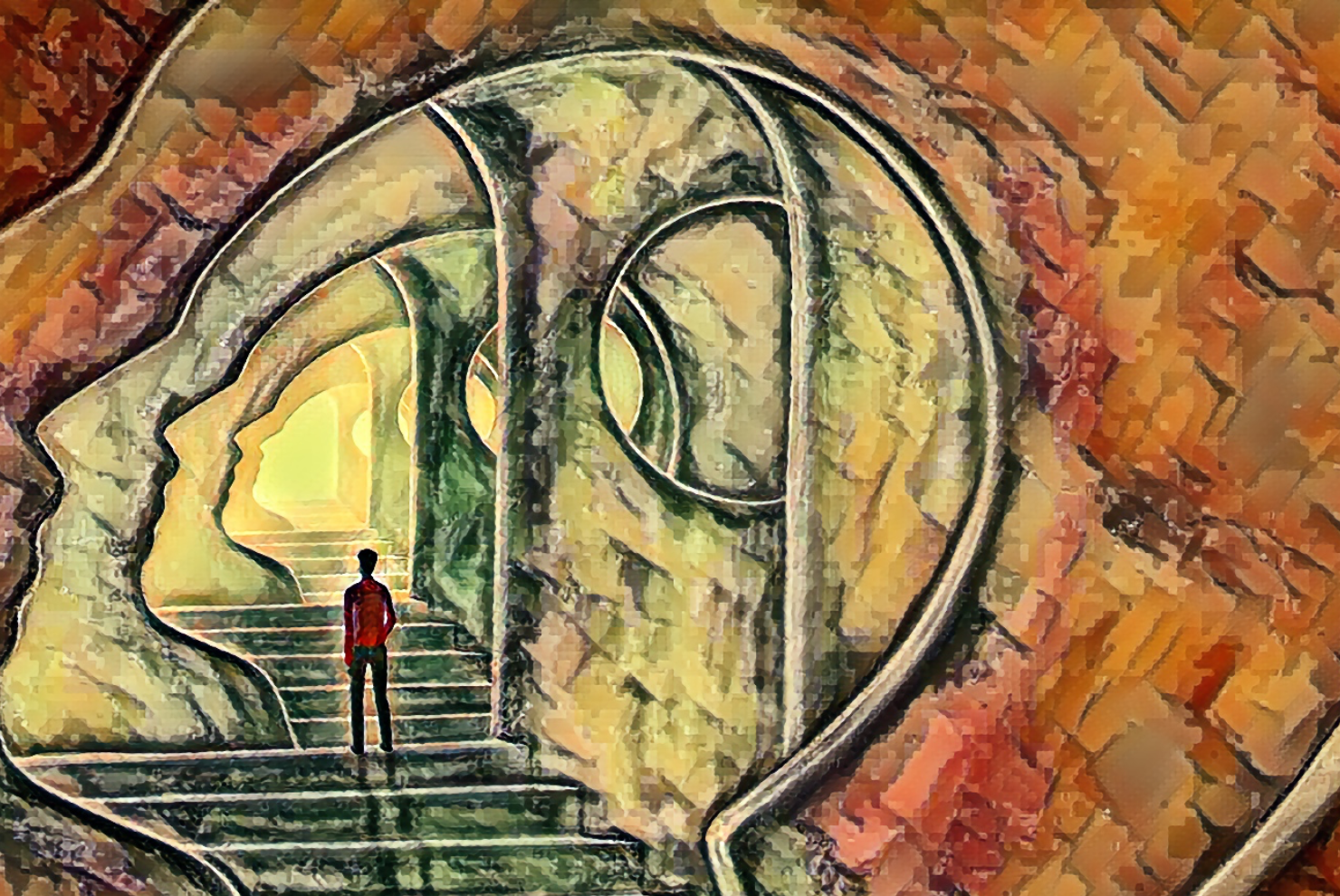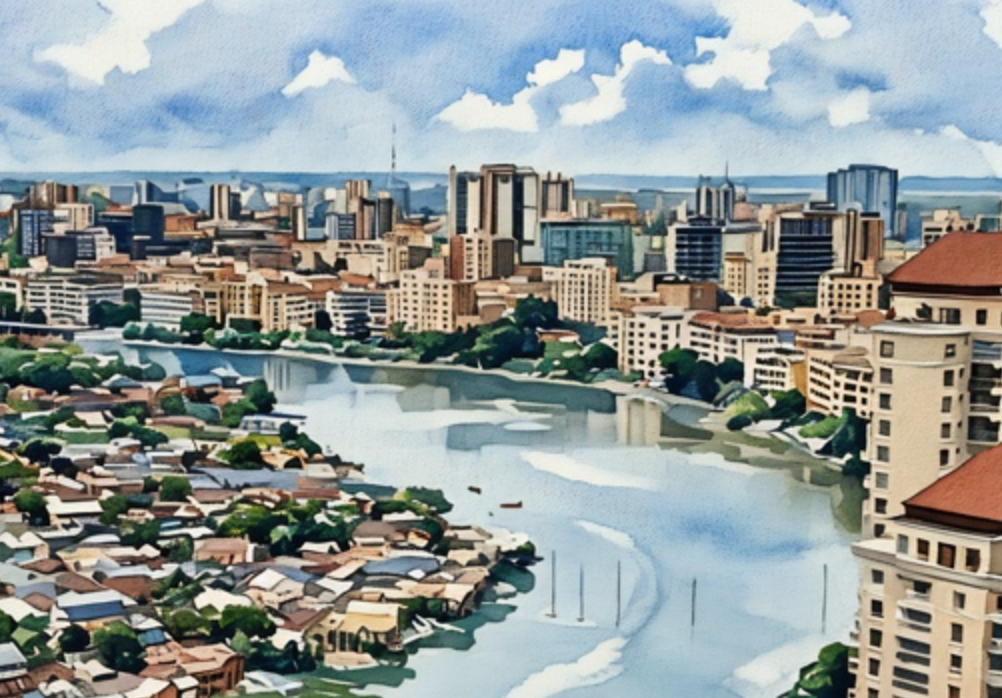Inside the landed gentry of the ‘United Republic of Gulshan’

Press Secretary Shafiqul Alam's facebook post titled "The United Republic of Gulshan" offers a disarmingly witty yet profoundly depressing glimpse into one of Dhaka's most exclusive enclaves: Gulshan.
He paints Gulshan as a hyper-urban ghost town, a place where quietude is a commodity, neighbors remain strangers, and genuine community has been supplanted by a meticulously crafted isolation.
While the short prose might appear to be a gentle poke at elite living, it's a sharp condemnation of a privilege rooted in historical amnesia and a perpetuation of postcolonial habits.
The contradictions that define Gulshan are stark and reveal a deeper malaise.
Long before the ubiquitous sushi bars and towering condominiums, Gulshan was Bhola Gram, a vibrant wetland village. In 1961, it was reimagined as a planned township for East Pakistan's civil servants.
These officials, steeped in the British-Indian ICS tradition, inherited not just administrative authority but also an aristocratic outlook – they governed, rather than served. Housing plots were essentially state-bestowed rewards, intricately designed to segregate the elite from the general populace.
After 1971, with the exodus of Pakistan's non-Bengali elite, their properties were declared "abandoned." These estates were then discreetly redistributed to a new cohort of Bengali power brokers: businessmen, military officers, and political allies.
Gulshan, in turn, transformed from a bureaucratic preserve into a veritable power zone. It no longer symbolized those who served the state, but rather those who controlled it.
The allocation of plots in Gulshan, Banani (1964), and later Baridhara (under Ershad in the 1980s), was less about strategic urban planning and more about profound social engineering.
These areas were conceived to physically and psychologically insulate the ruling class.
From the late 1990s onward, as wealth became more conspicuously displayed, banks, telecommunication giants, and multinational corporations flocked to Gulshan.
Commercial activity surged, and real estate prices skyrocketed, placing Gulshan among the world's five most expensive zones today, alongside global behemoths like New York, Tokyo, London, and Mumbai.
The descendants of those original allottees, without hesitation, razed old villas to erect gleaming high-rises, amassing fortunes their grandparents could scarcely have imagined.

The internationalization
of Gulshan
Beyond mere real estate, Gulshan underwent a profound identity transplant from the 1970s through the 2000s.
With the influx of embassies, international schools, and luxury boutiques, what began as a leafy suburb for bureaucrats gradually reinvented itself as Dhaka’s version of Mayfair – or, perhaps more accurately, a meticulously curated performance of it.
This shift fostered a peculiar culture: global in its superficial appearance, yet remarkably shallow in its local roots. Children raised in Gulshan often grew up speaking English more fluently than Bangla, spending holidays abroad, attending elite universities, and consuming foreign media that seemed utterly detached from their own national reality.
Over time, their cultural compass needle swung decisively – from Dhaka to San Francisco, from Chittagong to Chelsea. "International secular standards" became the aspirational ideal; national identity, a mere afterthought.
Within this gilded bubble, proximity to foreign power evolved into a potent form of social currency. Residents of the "Tri-State" area (Gulshan, Banani, and Baridhara) assiduously courted diplomats through lavish cocktail parties.
An invitation to a diplomat's home – or, better yet, to an official embassy reception – signaled undeniable prestige. Sending children to international schools alongside the offspring of diplomats became a coveted status symbol.
A particularly high distinction was reserved for those who held honorary consulate roles, which, perhaps not coincidentally, came with perks like duty-free alcohol – the very fuel of Gulshan's vibrant social scene.
For foreign missions, this arrangement proved remarkably convenient. Citing "security reasons," many diplomats rarely ventured beyond Gulshan's secure confines. Their understanding of the country often relied on these curated parties, expat clubs, and filtered feedback from a select group of elite locals.
High-teas, school fundraisers, and art events became the default spaces where the complex "ground realities" of Bangladesh were smoothly distilled into polite, palatable soundbites.
In this self-imposed isolation, a subtle condescension toward the rest of the country became almost instinctive. Whether at private dinner tables or in corporate boardrooms, the broader Bangladeshi population is frequently reduced to simplistic tropes: chaotic, overly devout, unrefined.
The chasm here isn't merely financial; it's a deep cultural, cognitive, and even generational divide.

A delusional portrait of reality
This exclusive lifestyle is, of course, propped up by a largely invisible workforce: the maids, drivers, guards, bartenders, cooks, tailors, barbers, and even dog walkers who commute daily from nearby slums.
These two vastly different worlds intersect only through the exchange of services. Occasionally, the meticulous work of a Mirpur tailor or a piece by a local artist might find its way into a Gulshan drawing room, but the relationship between these worlds remains strictly transactional. Intimacy is an illusion; genuine equality, off-limits.
The 2024 uprising starkly exposed this deep fracture within Bangladeshi society. As the Hasina regime teetered under the weight of student-led protests, Gulshan’s elite, remarkably, continued their social engagements well into July–even after the pivotal events of August 5th.
While some offered cautious vocal support for the burgeoning movement, seeing potential political openings or harboring private grievances, their enthusiasm quickly waned once demands shifted towards fundamental structural reforms–electoral, tax, and constitutional changes.
Genuine transformation, it seemed, struck a little too close to their carefully constructed comfort zones.
Simultaneously, a quieter, profound irony has been unfolding. Many third and fourth-generation Gulshanites have already migrated abroad, or are planning to. Their aging parents, often cared for by long-time domestic staff, remain.
Over time, these dedicated caregivers have, legally or not, often become de facto heirs to multimillion-dollar estates. Upon the original owners' passing, these contested inheritances frequently turn once-opulent homes into complex legal minefields.
This silent decline, this curated loneliness, is perhaps the very gloom Shafiqul Alam so acutely evokes.
It is crucial to note that the third and fourth generations of Gulshan’s residents are not villains. Many are foreign-educated, polished graduates of prestigious institutions, armed with impressive intellectual credentials.
They bring a distinct global finesse to local platforms – whether in entrepreneurship, academia, activism, journalism, or governance. Often, they are the first in the country to introduce imported ideas, technologies, or aesthetics, launching trends that the rest of the nation then follows.
And yet, for all their brilliance and cosmopolitan polish, many remain either misinformed or willfully blind to the fundamental origins of the privilege they so seamlessly inhabit.
Most genuinely believe their lives are solely shaped by meritocracy, ambition, or fortunate lineage. Few however pause to interrogate the deeper architecture of that lineage: how their prosperity is intrinsically rooted in a long arc of structural advantage that began with colonial land grants, was perpetuated by Pakistan’s civil service aristocracy, then inherited by post-1971 political elites, and finally, supercharged in the neoliberal free-for-all of unregulated Bangladeshi capitalism.
Public reactions to Shafiqul Alam’s piece also vividly reveal this collective blind spot. Some residents fondly recalled the Gulshan of the 1980s and 90s–cycling down leafy streets, flirting over cold coffees, attending community melas.
Others dismissed the piece entirely as uninformed, even envious. A few admitted that Gulshan may have lost some of its charm but insisted it remained a "great place to live."
But herein lies the inherent contradiction: their nostalgia is for the Gulshan—the sanitized, gated version built for a select few—not for the Gulshan that others were never allowed to enter.
The nostalgia is real, but it is also deeply selective, clinging to personal history while conspicuously overlooking the broader socio-political forces that made that very history possible.

The dynamics within
Even within Gulshan’s elite, hierarchy thrives.
A subtle but persistent snobbery separates those still living in original single or double-story homes–the self-appointed custodians of "old money"--from those who've purchased or inherited luxury apartments in newly minted high-rises.
The former are the legacy elites, whose generations of relatives, friends, enemies, and divorced spouses routinely bump into each other at overpriced grocery stores, artisanal cafés, and high-profile parties within the same exclusive ZIP code.
The latter are often dismissed as "nouveau riche"--social climbers who, according to the unwritten codes of pedigree, haven’t truly earned their place.
Then there are the renters. If they're foreigners, they are generally welcomed–often seen as reliable paymasters and culturally detached enough not to disrupt the internal power dynamics.
Local renters, however, occupy a more awkward position. They exist, but rarely penetrate the inner circles of the legacy elites; their access is typically limited to cafes, salons, and restaurants–never drawing rooms or dinner tables.
It is a quiet class war played out behind high walls, articulated through carefully curated guest lists, whispers of inheritance disputes, and an endless stream of real estate gossip–all fueled by a culture fixated on being seen at precisely the right places, by precisely the right people, at precisely the right time.
It’s not uncommon to see the socialite spouse of a second-generation business tycoon sharing an elevator ride with a newly minted member of parliament who can’t string together a sentence in proper Bengali–but still commands instant deference, simply by being part of the architecture of influence.
Nowhere is this dynamic more visible than in the clubs–those glittering showcases of social capital–where the primary criterion for membership is a few crores in liquid assets. The source of those crores? Considered irrelevant.
While the Gulshan Azad Mosque remains the most opulent venue for Friday and Ramadan prayers in the country, a striking paradox emerges among some younger, liberal Gulshanites.
They often position themselves as vocal advocates of secularism, LGBTQ+ rights, and feminism. Yet, many remain visibly uneasy with traditional Islamic practices and demonstrably resistant to the very idea of social equality–principles that rarely align with the progressive values they claim to champion.
The irony deepens when they move abroad, expecting protection from racism under the cloak of their millionaire identity, even as they continue to uphold classist worldviews back home.
For some, a long life overseas may bring a flicker of change, perhaps a newfound appreciation that extends up to talking to their house help in the respectful "apni" instead of "tumi," but that’s often where the transformation ends.

The republic stands
Today’s more "respectable" residents–those with clean, professional incomes–often assume their wealth is simply the fruit of hard work, luck, or parental discipline.
Few interrogate whether their inheritance traces back to a CSP (Civil Service of Pakistan) grandfather of the Raj, an awarded Khan Bahadur for colonial loyalty, a Talukder whose wealth came from suppressing others, or a bureaucrat or minister rewarded with prime land for loyal service–whether under Pakistan or post-1971 regimes.
The prevailing narrative now goes: "I belong in New York or London–it’s not my fault I inherited a 300 crore corner plot in Gulshan. I’m just planning to sell it and move the funds abroad."
It is that quiet shrug of entitlement–disguised as detachment–that defines the unspoken ethos of the modern Gulshanite. Not with malice, but with a studied refusal to reckon with history.
Let’s be honest: Shafiqul Alam’s portrayal of Gulshan may be harsh, and it certainly misses the nuance of younger subcultures–artists, activists, and returning diaspora Bangladeshis trying to reshape the space.
But the spirit of his critique is justified. Gulshan is not a neighborhood. It’s an economic caste system with a ZIP code.
And if this caste system continues to widen the gap between the haves and have-nots, it is only a matter of time before the next uprising doesn’t stop at slogans–it pushes the gates and climbs the stairs.
The events of 2024 already gave us a chilling glimpse: angry crowds brushing against privilege, forcing Gulshanites to patrol the area in their luxury SUVs to protect their wealth from dacoity, and mobs from nearby slums ransacking apartments, alleging owners had links to the fallen regime and hoarded large amounts of illegal cash.
It’s no longer a question of if. It’s when. Because no amount of imported wine, luxury SUVs, or rooftop cocktail parties can drown out the rumble of history knocking on the gate.
—
Omar Faris is a writer and analyst

